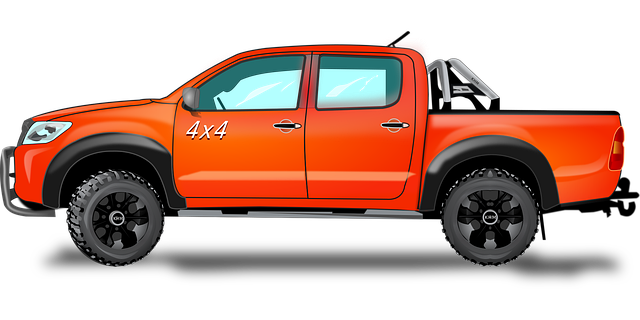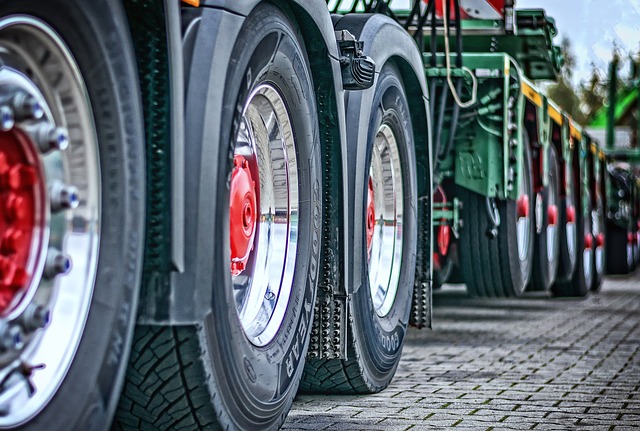Hitch balls are vital components for securing trailers and equipment behind vehicles, playing a key role in 4×4 repairs and automotive modifications, especially for off-road enthusiasts. They vary in type, with gooseneck hitches for heavy-duty hauling and ball mount hitches for light to moderate towing. Choosing the right hitch ball based on vehicle capacity is crucial for safe trailering. Regular maintenance, including inspecting for damage and replacing as needed, ensures optimal 4×4 performance and safety during off-road adventures or everyday towing tasks.
“Unleash your 4×4’s potential with hitch balls, versatile accessories that transform your vehicle into a towing powerhouse. This comprehensive guide unravels everything you need to know about these essential components. From understanding their definition and purpose to exploring diverse types and their applications, we equip you with insights for informed choices. Learn how to select the perfect hitch ball for your 4×4, ensuring optimal performance. Moreover, discover practical tips for maintenance and replacement, eliminating the hassle of ‘4×4 repair near me’ searches.”
- Understanding Hitch Balls: Definition and Purpose
- Types of Hitch Balls and Their Applications
- Choosing the Right Hitch Ball for Your 4×4
- Maintaining and Replacing Hitch Balls: A Step-by-Step Guide
Understanding Hitch Balls: Definition and Purpose

Hitch balls, also known as trailer hitches or tow hitches, are essential components designed to facilitate the attachment and secure transport of trailers, cargo carriers, or other equipment behind a vehicle. These robust mechanical fittings play a pivotal role in 4×4 repair near me and automotive modification, especially for off-road enthusiasts and outdoor adventurers. By allowing for easy connection and adjustment, hitch balls enable users to tow various accessories securely, enhancing the versatility and functionality of their vehicles.
The primary purpose of a hitch ball is to provide a sturdy mounting point for trailer couplers or hitches. Typically, they are bolted onto the vehicle’s chassis or frame, ensuring a secure attachment during transit. With different sizes, weights capacities, and ball patterns available, hitch balls cater to various towing needs, from light-duty applications like hauling bicycles to heavy-duty scenarios involving large recreational vehicles or specialized equipment.
Types of Hitch Balls and Their Applications

Hitch balls come in various types, each designed for specific applications and vehicle setups. The most common categories include gooseneck hitches, which are ideal for heavy-duty hauling and offer a more stable connection due to their extended reach and weight capacity. These are particularly popular among 4×4 owners who frequently tow trailers or large equipment for off-road adventures. Another type is the ball mount hitch, suitable for light to moderate towing tasks, making it a common choice for everyday use vehicles like SUVs and pickup trucks.
When considering 4×4 repair near me, selecting the right hitch ball is essential. For instance, if you’re into outdoor recreation and need to transport ATVs or boats, a sturdy ball mount with a high-weight rating will ensure safe and secure towing. Conversely, for simple tasks like connecting a car trailer for occasional use, a more affordable gooseneck hitch might be overkill. Understanding your towing needs and vehicle capabilities is key to choosing the best hitch ball for your 4×4.
Choosing the Right Hitch Ball for Your 4×4

When selecting a hitch ball for your 4×4, it’s crucial to consider factors like vehicle weight capacity and ball size compatibility. Different 4×4 models have varying towing requirements, so choosing the right hitch ball is essential for safe and secure trailering. A professional 4×4 repair near me can assist in determining the appropriate ball class based on your vehicle’s specifications.
Ball types range from lighter-duty classes suitable for smaller vehicles to heavier-duty options designed for robust off-road setups. Ensure that the hitch ball’s rating aligns with your 4×4’s towing capacity to prevent any potential hazards. This simple step can significantly impact the overall stability and safety of your trailer or accessories when hitched to your 4×4.
Maintaining and Replacing Hitch Balls: A Step-by-Step Guide

Maintaining and replacing hitch balls is a crucial part of keeping your 4×4 in top condition, especially for those frequenting off-road trails. Start by regularly inspecting the hitch ball for any signs of damage or wear. Rust, cracks, or deformations are indicators that it’s time to replace. When replacing, ensure you get a ball that matches your vehicle’s specifications, as using the wrong size or type can compromise stability and safety.
The process begins with removing the old ball. This typically involves loosening the hitch pin using a specialized tool. Once the pin is removed, carefully pull out the old hitch ball. Clean the hitch receiver thoroughly to eliminate any debris or corrosion before inserting the new ball. Securely fasten the new hitch ball with the pin, ensuring it’s tight but not excessively so, to avoid damage. For those needing 4×4 repair near them, regular maintenance like this can ensure your vehicle is ready for any terrain.
Hitch balls are an essential accessory for 4×4 owners, offering a simple yet effective way to secure towing equipment. By understanding the different types and their applications, as well as choosing the right fit for your vehicle, you can enhance your off-road adventures. Regular maintenance and easy replacement are key, ensuring a safe and reliable setup. For any 4×4 repair needs near you, these tips serve as a valuable guide to keep your rig running smoothly.



